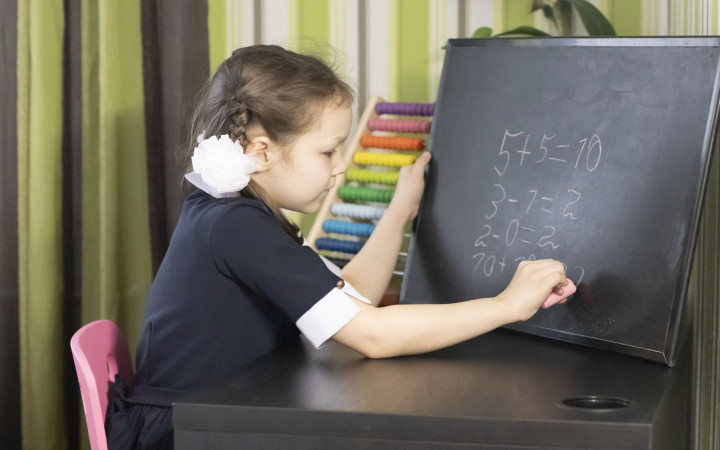Today’s Wonder of the Day was inspired by Macy. Macy Wonders, “How is addition like subtraction?” Thanks for WONDERing with us, Macy!
A big thank you goes to Deb Frazier’s (@Frazier1st) class in Ohio for nominating today’s Wonder!
When you’re first learning basic math, it can seem as easy as 1 + 1 = 2. Easy peasy, right? Sure, it gets harder, but before long you’re memorizing all of those basic addition facts with the help of flash cards.
Then one day, your teacher turns the tables on you. Suddenly you’re faced with subtraction. You’re no longer counting up two groups of things to get a simple sum. Instead, you’re taking things away and trying to figure out how many are left.
Kids often feel that subtraction is more difficult. After all, it’s completely different from addition, right? Not so fast! Addition and subtraction actually share a special relationship.
As mathematicians like to say, there is an inverse relationship between addition and subtraction. So what does inverse mean? Without getting too technical, you can think of inverse as meaning “opposite.”
For example, the inverse of hot is cold. Likewise, the inverse of addition is subtraction. And guess what? The inverse of subtraction is addition! Why? Addition and subtraction are opposites. They basically undo each other.
Let’s see how this works. If we add 1 + 1, we get 2. That’s addition. If we then take away 1 from our 2, we undo the addition we just performed and end up with 1. That’s subtraction.
To understand the relationship between addition and subtraction on an even deeper level, we need to learn about two more things: number facts and fact families. A number fact is a simple equation made up of three different numbers. For example, 1 + 2 = 3 is a number fact.
For each set of three different numbers, you can create two addition and two subtraction number facts that are . We call these four number facts a fact family, since they’re kind of like the members of a family.
If we stick with 1, 2, and 3 as our three numbers, we can create the following fact family:
1 + 2 = 3
2 + 1 = 3
3 – 2 = 1
3 – 1 = 2
If 1 + 2 = 3, then it obviously follows that 2 + 1 = 3, since you’re just switching around the order of the two numbers you’re adding. The subtraction number facts also follow, since they’re the opposite of the two addition number facts.
If you need to visualize it, just think of the addition number fact in reverse, switching the place of the equal sign and the plus sign and then switching the plus sign to a minus sign. 1 + 2 = 3 becomes 3 – 2 = 1!
Thinking about it like this can help you get a better grasp on subtraction. It’s always difficult to learn a new skill, but when you can connect it to something you already know, it gets easier!
Standards: CCSS.MATH.OA.A.1, CCSS.MATH.OA.B.3, CCRA.L.3, CCRA.L.6, CCRA.R.1, CCRA.R.2, CCRA.R.4, CCRA.R.10, CCRA.SL.1




